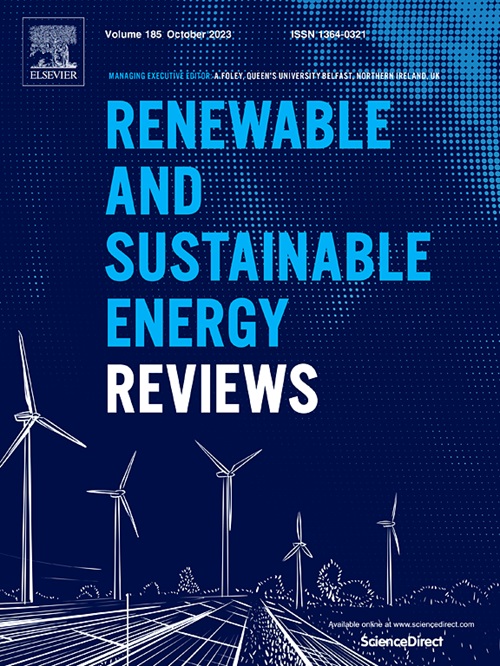Comparison of voltage rise mitigation strategies for distribution networks with high photovoltaic penetration
IF 16.3
1区 工程技术
Q1 ENERGY & FUELS
引用次数: 0
Abstract
Contemporary distribution networks face increasing challenges due to the integration of variable distributed energy resources, particularly photovoltaic systems, which often lead to voltage deviations and reduced power quality. This study investigates the critical problem of voltage deviations caused by the integration of photovoltaic generation and addresses it by performing a comprehensive comparison of different voltage control strategies in terms of their viability and impact on power losses. The considered strategies include network reinforcement, component upgrades, generation-demand coordination, and inverter control techniques. Specifically, solutions such as shunt reactors, battery energy storage systems, line voltage regulators, transformers with on-load tap changers, double-fed lines, smart inverter control, and coordinated charging for electric vehicles are examined. Through the comparative analysis, the study provides insights into selecting the most suitable means and measures for mitigating voltage deviations in photovoltaic-rich distribution networks. Such information would assist distribution system operators in safely increasing the volume of photovoltaic generation in the power distribution networks. The reactive power control with smart inverters emerges as a viable option but may limit local generation and increase power losses. In addition, by contributing to the optimization of renewable energy integration, this work supports Sustainable Development Goal 7 (Affordable and Clean Energy) and promotes cleaner, more reliable power distribution solutions.

求助全文
约1分钟内获得全文
求助全文
来源期刊

Renewable and Sustainable Energy Reviews
工程技术-能源与燃料
CiteScore
31.20
自引率
5.70%
发文量
1055
审稿时长
62 days
期刊介绍:
The mission of Renewable and Sustainable Energy Reviews is to disseminate the most compelling and pertinent critical insights in renewable and sustainable energy, fostering collaboration among the research community, private sector, and policy and decision makers. The journal aims to exchange challenges, solutions, innovative concepts, and technologies, contributing to sustainable development, the transition to a low-carbon future, and the attainment of emissions targets outlined by the United Nations Framework Convention on Climate Change.
Renewable and Sustainable Energy Reviews publishes a diverse range of content, including review papers, original research, case studies, and analyses of new technologies, all featuring a substantial review component such as critique, comparison, or analysis. Introducing a distinctive paper type, Expert Insights, the journal presents commissioned mini-reviews authored by field leaders, addressing topics of significant interest. Case studies undergo consideration only if they showcase the work's applicability to other regions or contribute valuable insights to the broader field of renewable and sustainable energy. Notably, a bibliographic or literature review lacking critical analysis is deemed unsuitable for publication.
 求助内容:
求助内容: 应助结果提醒方式:
应助结果提醒方式:


